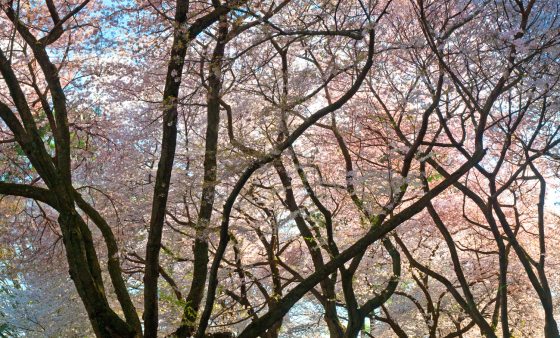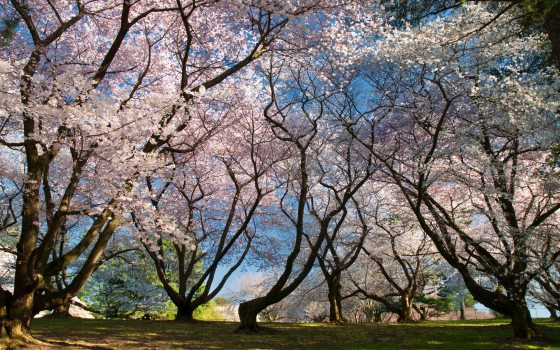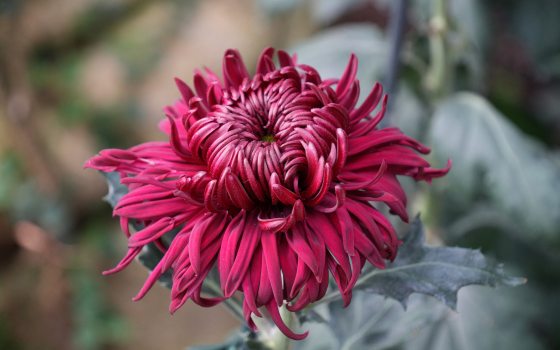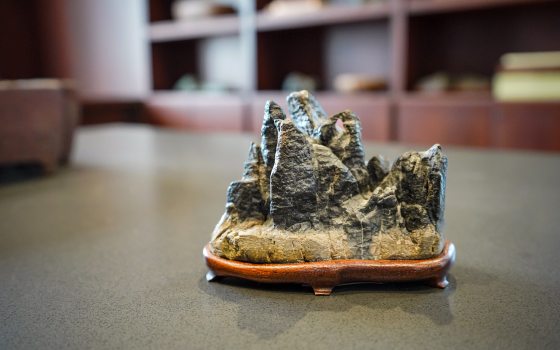People do not talk enough about beauty. Sure, we spend a lot of time analyzing the lives of celebrities, the latest fashions, and our own physical beauty… but these distractions are often unhealthy obsessions and give beauty a bad reputation. We spend too little time fully exploring other forms of beauty—from the natural world to the way we connect to each other. Some have written that gardening for the sake of beauty isn’t widely embraced in the United States because it doesn’t produce a beneficial outcome for mankind. In other words, we Americans will only garden if there is a utilitarian outcome, such as putting food on the table. I believe beauty in and of itself is a worthy goal and does have value in our lives.

Cherry blossoms at Longwood Gardens. Photo by Larry Albee.
I will never forget a lunch meeting I had with a potential donor in my early days as an executive director of a public garden. I knew this person was heavily involved with local hospitals and health-care issues. I also knew that she was a keen gardener and had a beautiful garden at her home. As we were chatting she said to me, “… you know, a garden isn’t necessary… it doesn’t have the same call to action or need as finding a cure for childhood cancers.” I was flabbergasted. How does one respond to such a statement? I understood what she was saying—that cultivating a beautiful garden does not carry the same urgency as curing disease, but nevertheless her words stung. Her statement speaks volumes about the perception of public gardens and their relevance in our communities. Several years later, I was meeting with another person who coincidentally was significantly involved in children’s healthcare. She told me, “we need this garden in our community, because all of us need to have beauty in our lives to nurture our souls … especially for children and their families facing serious health issues.”
Public gardens around the world are beautiful places that make a huge difference. We demonstrate how communities can grow and sustain themselves responsibly. We are actively addressing climate change by building awareness and implementing tactics to reduce our carbon footprints (such as the 1.5-mega watt solar facility at Longwood or our progressive composting program). Public gardens are the Noah’s Ark for the plant kingdom, actively preserving and conserving threatened ecosystems and their plants all around the world. It’s easy to talk about these very tangible connections to the relevant issues of the day, but at the end of the day, why are we doing it? From my perspective, it’s about the beauty…the beauty of this global garden that we all share a responsibility for stewarding. Beauty is relevant.
Longwood Gardens is about beauty and I make no apologies for that. Our aim is to transport every one of our guests into another world. The beauty we create 365 days every year is a microcosm of the greater global garden. In the weeks and months ahead I hope to elaborate on Longwood’s story of beauty through posts on our blog. I want to share with you how and why we do what we do. I want all of us in the public garden and cultural arts world to talk about and appreciate beauty more openly, because it is a necessity in life. The great naturalist and conservationist John Muir summarized it best:
"Everybody needs beauty as well as bread, places to play in and pray in, where nature may heal and give strength to body and soul alike.” The Yosemite (1912)


